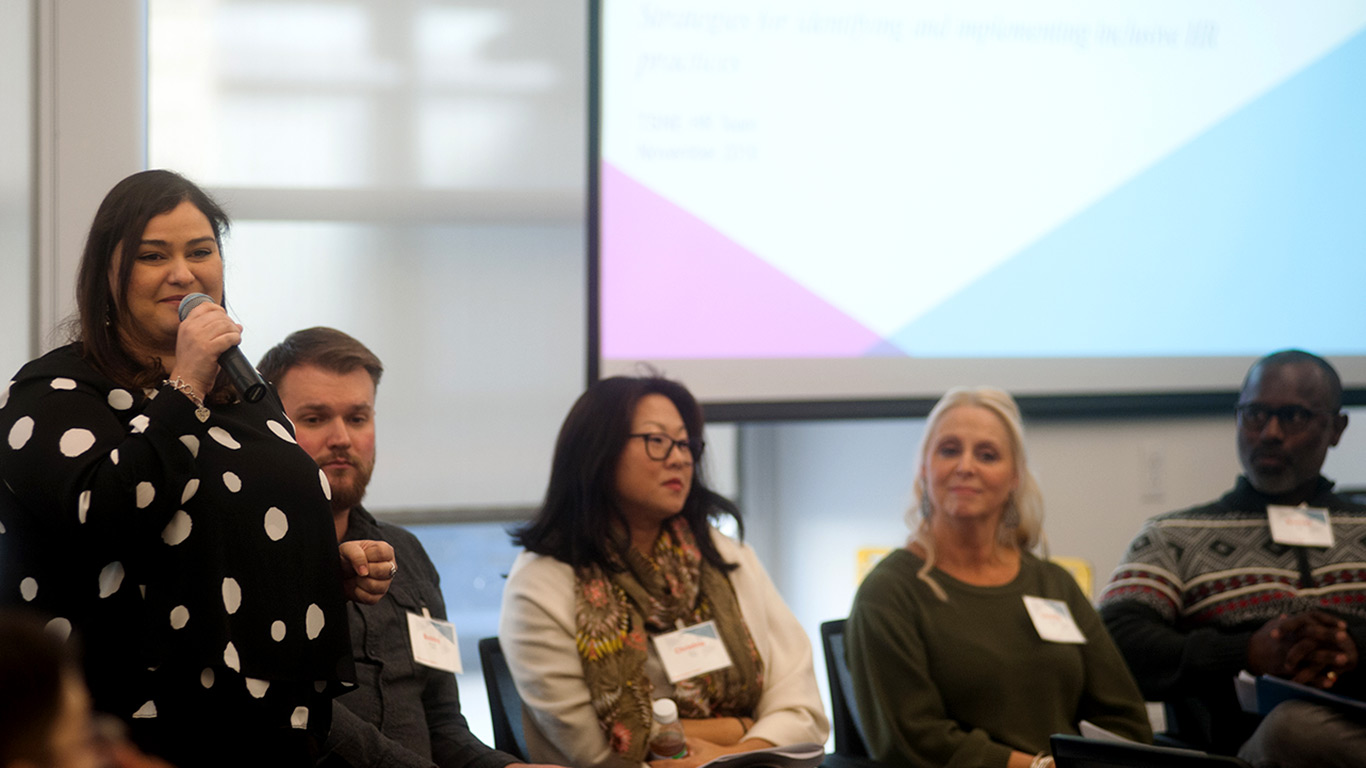In times of crisis such as the one we are currently experiencing, HR is called to assess and contribute to a broader response that embeds our organization’s mission, values, and societal impact with a focus on the well-being of our staff, stakeholders, and the community. We need strategies for business continuation that also addresses how people can stay psychologically resilient. This is particularly important in the nonprofit sector, where dedicated staff are the champions of the continuation of services to their communities. Now is the time your people need you the most.
It is key for HR to promote a climate of calm while also engaging leadership to respond with timely, accurate, assertive, clear, and consistent communication from all levels of the organization. In addition, communication needs to be honest, open, and as transparent as possible to maintain credibility. The approach should always come from a place of empathy and understanding of the different impacts situations like these have on people, from the physical to the mental. Staff are our most valuable asset, and we need to look at our mission and our people together.
TSNE’s Six HR Best Practices during COVID-19
1. Create/Activate an Emergency Response Team
- Ensure that HR is part of an Emergency Response Team. Provide input in the guidelines to be implemented, gather and share staff and client’s questions and concerns; inform the team of new developments in employment laws and benefits; share revised policies; provide strategies to manage remote workers; share risks related to the crisis; and make sure that values and equity are still at the center of decision-making.
- This team should have established meetings on a regular schedule basis to discuss updates, initiatives, and communication strategies.
2. Make Communication Deliberate, Consistent, and Over Communicate if Necessary
- Communication and the actions you take should be thoughtful, clear, succinct, accurate, consistent, and as transparent as possible. This way of communication builds trust. Work with leadership and your internal communication team to build a robust internal updates framework and a communication plan. Click here for more information on communications best practices.
- Communicate how to report possible cases of COVID-19 exposure or diagnoses. Reinforce there will be no retaliation for disclosing this information and that their confidentiality will be treated with the upmost respect. Share with staff the status of identified cases (keeping confidentiality), how the organization is addressing it, and what the organization’s next steps are.
- Be proactive! Anticipate answers to questions and concerns you will face. Make it easy for staff and clients to ask questions via a specific channel of communication that creates consistency and follow through.
- Create a Frequently Asked Questions (FAQ) document that is easily accessible. Keep it up-to-date and notify staff of changes to the document.
3. Care for Staff! Employee Wellness and Safety Initiatives
- Keep in constant communication with your employees on their physical and mental health. Staff should hear from leaders often and feel supported. Practice empathy and address concerns in a prompt matter.
- Safety is basic and essential. Be forthcoming with hygiene and safety practices. Mitigate employee’s concerns and anxiety by proactively talking about your organization’s sanitary health practices, safety and health equipment that you are able to provide, and share the CDC guidelines for basic precautions.
- Encourage social distancing by asking staff to not only limit travel and large group gatherings, but also avoid handshakes, hugs, and other physical interactions.
- Continually inform staff of what is included in their benefits plan. Activate your Wellness Program. Share and connect staff with your Employee Assistant Program as well as with other Health benefits such as Telehealth.
4. Reconsider Leaves and Policies
- Stay updated. Monitor changes and updates on new employment legislation that impact employee benefits and leave, like the Families First Coronavirus Response Act (FFCRA), and communicate those with the Emergency Response Team to develop solutions around implementation and communication.
- Define and modify policies, controls, and practices that address these emergencies. Communicate those changes with transparency through your leadership.
5. Implement Remote Work Strategies
- Social distancing is key for helping slow down the spread of COVID-19. If working remotely is a possibility, HR should work with IT to ensure the smooth transition to a remote work scenario.
- Activate a Communication Phone Tree, to make sure everyone know the channels of communication in an emergency.
- Create and share a quick guide for supervisors and employees with best practices for working remotely. This guide should address efforts to encourage health and well-being, work engagement, boundaries, and the rhythm and pace of remote work. Make sure you set up a live meeting to share these practices.
- TSNE has created a Supervisor Guide for Managing Remote Employees and an Employee Guide for Remote Working.
6. Avoid Bias, Discrimination, and Exclusion
- Xenophobia, Islamophobia and racism are spreading even more quickly than the virus itself, and HR must be attentive and continue to build leadership, respect and equity. Ensure that your organizations talks about this and supports an environment free from micro-aggressions within your workplace and beyond.
- Ensure that your staff continue to demonstrate respect towards each other and encourage staff to come forward to HR if they become aware of anti-race comments, behaviors or jokes. Have clear anti-discrimination policies in place and they are implemented equitably.
Lastly but most importantly, do not forget to show your humanity and your compassion. Share strategies on how to stay physiologically resilient in the midst of these strange and difficult times. Business is not “as usual” right now, and it will take time to adjust to a new routine. There is still much uncertainty, and the economic and social impacts of this pandemic will have long lasting effects.
